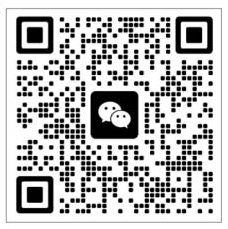E-mail:Machine@chinaventech.com Expert for pre insulated duct CNC cutting machine.
Can time really go back? Three interesting experiments about lasers
In the post-drone era, use lasers to provide Internet services
We are already familiar with Facebook’s Internet.org project, which aims to provide network services to remote places in the world. Now, this project is testing laser technology again. Facebook's ConnectivityLab (ConnectivityLab) intends to let drones and satellites in the sky emit lasers to transmit network signals to any place. FacebookCEO Mark Zuckerberg said that this will significantly increase the speed of long-distance data transmission.
He also posted a few photos of using lasers on his Facebook homepage, but he said that the beams are invisible in actual use. The lasers in the pictures have been processed, but he did not further explain the whole project. . ConnectivityLab has been building drones, and it has also published a white paper that outlines a project that uses FreeSpace Optics (FSO) technology to establish Internet connections. The laser of the FSO system can provide high-speed bandwidth, but it needs precise calibration and is susceptible to cloud cover and inclement weather.
Australian scientists prove through laser experiments that time can be turned back
News from June 11, Beijing time, according to foreign media reports, in modern physics, there is a core principle that light can only advance in one direction, that is, only the past can affect the future. The future cannot affect the past. However, scientists from the Australian National University have recently discovered through experiments that at quantum energy levels, this core principle may not work. Researchers believe that this means that future events can affect events that have already occurred, and light can move forward or backward. The clock at St. Pancras International Railway Station in London, England. The latest research shows that at quantum energy levels, future events may affect past events. This is a weird phenomenon that scientists have recently observed in the field of quantum mechanics.
Professor Andrew Trustcott (left) and Dr. Roman Kakimov, members of the research team, are using lasers to improve u0026'double slit experimentu0026'. They fired high-speed helium atoms through the first laser grating and measured whether the state of the helium atoms changed if the second grating appeared.
In the standard u0026'Double Slit Experimentu0026Light band, which is a typical phenomenon in which photons travel in the form of waves (below).
The Australian National University research team has conducted in-depth research on the strange behavior of particles in quantum mechanics. In the quantum world, a moving object may exist in two states at the same time, namely particles and waves. However, it is impossible for us to see them in both states at the same time. This is because when scientists try to observe visible photons or fast-moving atoms, they appear either as particles or as waves.
Japanese researchers show a touchable laser hologram
The researchers used a device called u0026'femtosecond laseru0026' to complete this experiment. They ensure the safety of touch by reducing the burst time of the laser. In the team’s demonstration video, a finger safely touched holographic images, which included a heart, a star, and a little fairy. All these images are essentially two-dimensional images projected into a three-dimensional space.
The ability to interact with holographic images with touch control was once regarded as a science fiction story by many people, but Japanese researchers have accomplished this feat. The researchers used a device called u0026'femtosecond laseru0026' to complete this experiment. They ensure the safety of touch by reducing the burst time of the laser. In the team’s demonstration video, a finger safely touched the holographic images, which included a heart, a star, and a little fairy. All these images are essentially two-dimensional images projected into a three-dimensional space. Researchers hope to use this technology to create a holographic human-computer interaction interface that can be suspended in the air.
Quick Links
Products
Contact Us


